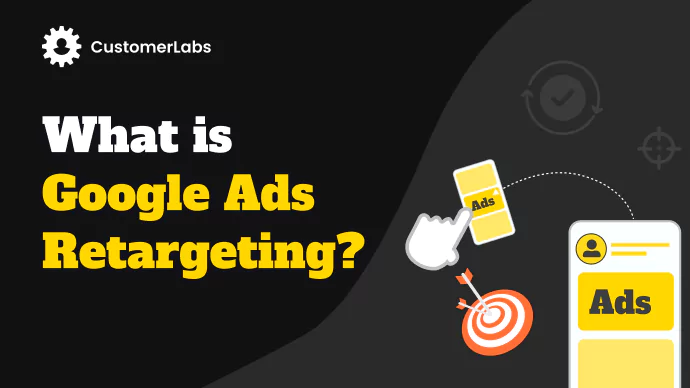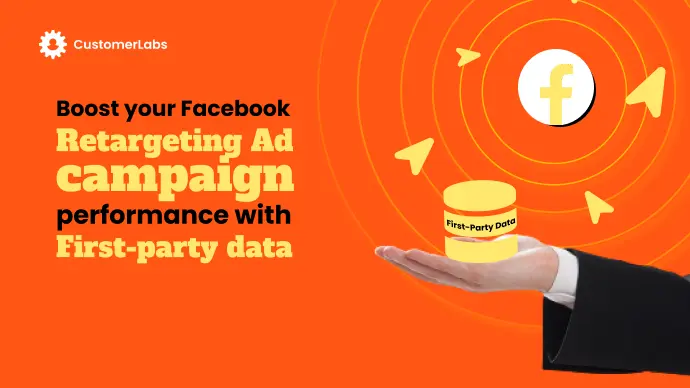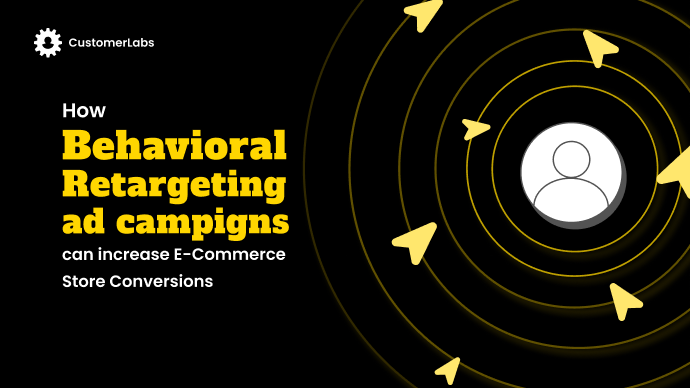Simply setting up a WooCommerce store isn’t enough to drive sales in a competitive market; effective marketing strategies are essential. One powerful strategy is WooCommerce retargeting—reaching out to visitors who have previously interacted with your site but haven’t completed a purchase.
As we navigate through this competitive world, retargeting for your WooCommerce store is becoming increasingly vital for marketers aiming to boost their sales.
First-party data (1PD) is key to successful retargeting. CustomerLabs offers a seamless solution for leveraging 1PD in your retargeting campaigns. By integrating CustomerLabs with your WooCommerce store, you can optimize your ad campaigns, improve performance, and drive more sales.
Understanding Retargeting in WooCommerce
Retargeting involves displaying ads to people who have previously visited your website but did not make a purchase. This strategy helps to keep your WooCommerce store in front of potential customers and encourages them to return and complete the purchase.
Retargeting works by tracking visitors on your WooCommerce store. When a visitor leaves your site without making a purchase, you will run targeted ads that are displayed to the visitor as they browse other websites or social media platforms.
For example, if a visitor views a product on your WooCommerce store but leaves without buying, a retargeting ad for that product can appear on their Facebook feed or while they browse other sites. This reminds them of their interest and encourages them to return and complete the purchase.
Difference between retargeting and remarketing
| Feature | Retargeting | Remarketing |
| Target Audience | Focuses on showing ads to potential customers who have visited your website or interacted with your WooCommerce store online but have not converted. | Typically involves re-engaging customers. |
| Method | Display ads | Marketing campaigns |
| Objective | Re-engage visitors to complete a purchase | Nurture customer relationships and encourage repeat buys |
| Data Used | Browsing behavior data of the visitors | Customer contact information |
Why First-Party Data Matters
First-party data is collected directly from your customers through interactions on your website. Unlike third-party data, which is aggregated from various external sources, first-party data is unique to your business and offers several key advantages.
Recent data privacy regulations, such as GDPR and CCPA have significantly impacted how businesses collect and use data. These regulations emphasize the need for transparency, user consent, and data security, making first-party data an even more valuable asset.
Using first-party data in your retargeting campaigns enables you to create highly personalized and effective ads. With detailed insights into customer behavior, preferences, and purchase history, you can deliver ads that are tailored to individual interests, increasing the likelihood of conversion. First-party data provides a deeper understanding of your audience, allowing you to segment your customers more effectively and create targeted marketing strategies.
Setting Up 1PD Retargeting with CustomerLabs
1. Sign Up for CustomerLabs: Create an account on the CustomerLabs platform if you haven’t already.
2. Install the CustomerLabs Plugin: Navigate to the WooCommerce store and install the CustomerLabs plugin.
3. Connect Your WooCommerce Store: Open the CustomerLabs dashboard and connect your WooCommerce store by following the on-screen instructions.
4. Configure Data Collection: Set up the data collection parameters within the CustomerLabs plugin to start capturing first-party data. This includes tracking user interactions, purchases, and browsing behavior.
5. Segment Your Audience: Use CustomerLabs to create audience segments based on the collected data. You can segment users by their purchase history, browsing behavior, or other criteria relevant to your retargeting strategy.
Syncing Data with Ad Platforms (Google Ads, Facebook Ads)
1. Google Ads Integration:
– In the CustomerLabs dashboard, go to the integrations section.
– Choose Google Ads from the list of available integrations.
– Follow the prompts to authenticate your Google Ads account and authorize CustomerLabs to access your ad data.
– Map the audience segments created in CustomerLabs to your Google Ads account. This allows you to target specific groups with personalized ads.
2. Facebook Ads Integration:
– In the CustomerLabs dashboard, navigate to the integrations section.
– Choose Facebook Ads from the list of available integrations.
– Authenticate your Facebook account and authorize CustomerLabs to access your ad data.
– Map the audience segments from CustomerLabs to your Facebook Ads account, enabling targeted ad campaigns.
By following these steps, you can effectively set up 1PD retargeting using CustomerLabs, ensuring that your WooCommerce store’s data is seamlessly integrated with major ad platforms.
Key Strategies to Boost Retargeting Ad Campaign Performance
1. Personalized Ad Content
Personalized ad content leverages behavioral data to create ads that resonate with individual users. By understanding what products or pages a user has interacted with, you can tailor ads to their specific interests, making them more likely to engage and convert.
2. Dynamic Retargeting Ads
Dynamic retargeting ads use product data to show specific items that visitors viewed or added to their cart but didn’t purchase. These ads automatically update to display the most relevant products to each user, enhancing the likelihood of conversion.
3. Cross-Channel Retargeting
Cross-channel retargeting ensures that your messaging is consistent across various platforms such as Google, Facebook, and other social media networks. By maintaining a cohesive WooCommerce store presence, you can reinforce your message and stay top-of-mind for potential customers.
4. Frequency Capping
Frequency capping prevents ad fatigue by limiting the number of times an ad is shown to the same user. This strategy ensures that your audience does not feel overwhelmed or annoyed by seeing the same ad repeatedly, which can lead to negative brand perception.
5. Exclusion Lists
Exclusion lists prevent ads from being shown to users who have already converted. This not only saves ad budget but also ensures that your ad spend is focused on acquiring new customers rather than targeting those who have already made a purchase.
Case Study
How India’s Leading Fashion Brand W for Woman Implemented Advanced Audience Segmentation
Background
W for Woman, one of India’s leading fashion brands, sought to improve its online retargeting campaigns by leveraging first-party data for advanced audience segmentation.
Their goal was to increase conversion rates and enhance customer engagement through more personalized marketing efforts.
Approach
- Data Collection: W for Woman integrated CustomerLabs with their WooCommerce store to collect first-party data from various touchpoints, including website visits, product views, and shopping cart activity.
- Audience Segmentation: Using the data collected, they created detailed audience segments based on behavior patterns, purchase history, and customer preferences. This segmentation allowed them to tailor their marketing messages to specific groups.
- Personalized Campaigns: With these segments in place, W for Woman launched personalized retargeting campaigns across multiple channels, including Google Ads and Facebook Ads. Each campaign was customized to address the unique interests and behaviors of each audience segment.
Results
- The personalized approach led to higher engagement rates, with customers interacting more frequently with the targeted ads.
- By addressing the specific needs and interests of different customer segments, W for Woman saw a significant increase in conversion rates.
- The detailed audience segmentation provided deeper insights into customer behavior, allowing for continuous optimization of their marketing strategies.
To Sum It All Up…
Incorporating first-party data into your WooCommerce store’s retargeting strategy can significantly enhance the effectiveness of your ad campaigns.
First-party data offers superior accuracy and relevance, better compliance with data privacy regulations, cost-effectiveness, and enhanced targeting capabilities.
By leveraging CustomerLabs, you can seamlessly collect and utilize first-party data to create highly personalized and targeted ads, improving engagement and conversion rates.







